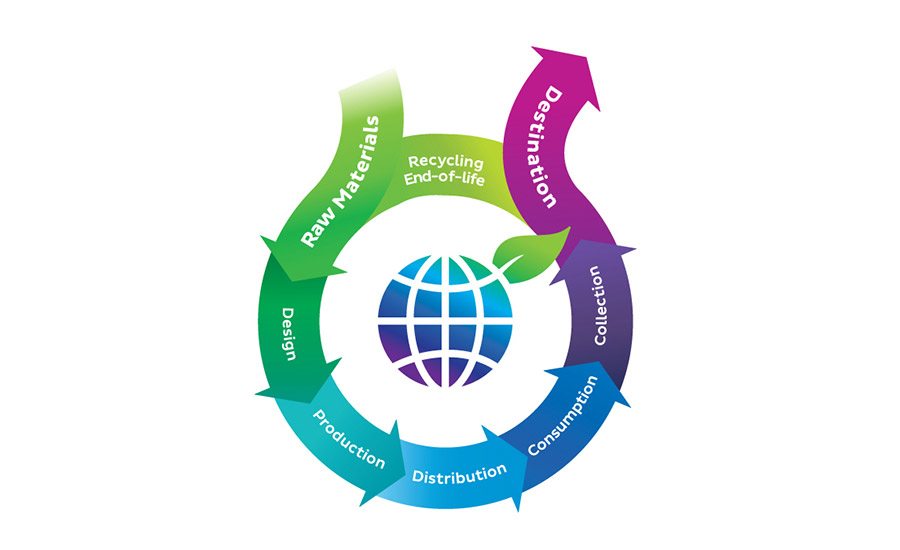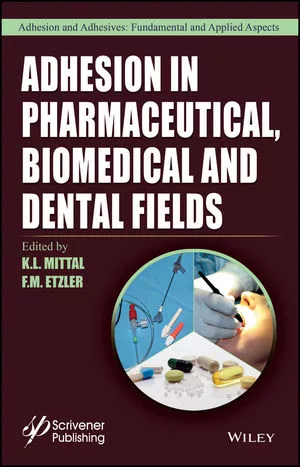Addressing Sustainability in Disposable Hygiene Products
Adhesive manufacturers can partner with players all along the supply chain to reduce the environmental impact of single-use disposable hygiene products.

As the world faces multiple economic, environmental, and social challenges, many companies are adopting corporate social responsibility (CSR) strategies to deliver more sustainable operations and products. Companies’ knowledge and understanding of CSR is at varying stages across the globe, however. Some have clear, well-thought-out strategies that they are executing and communicating; others welcome support.
The United Nations (UN) first published “Our Common Future” in 1987.1 Often called the Brundtland Report, it envisioned sustainability as: “Meeting the needs of the present without compromising the ability of future generations to meet their own needs.”
In the years since this UN publication, governments and companies across the globe have worked together to expand on this idea. Today, the UN has identified 17 Sustainable Development Goals.2 According to the UN, “The Sustainable Development Goals are a blueprint to achieve a better and more sustainable future for all. They address the global challenges we face, including poverty, inequality, climate change, environmental degradation, peace, and justice.”3
With the exception of the adhesive that secures a feminine hygiene or light incontinence pad to the wearer’s underwear, or those used in some diaper closure systems, the bonding solution in a hygiene product generally goes unnoticed. Adhesives are not typically top of mind to consumers of disposable hygiene products. They are not a large part of the product and can possibly be an afterthought by the article producers themselves. In fact, adhesives make up only 2-3% of the average diaper by weight; in terms of CO2 emissions, 6% is a common estimate. However, it is important to recognize that adhesives have several important tasks in these applications, from sealing and securing the diaper or pad core’s structure to holding elastics firmly in place inside the diaper.
 Adhesives must seal and secure the diaper’s core structure while keeping elastics in place. (Image courtesy of Tom Merton via www.gettyimages.com.)
Adhesives must seal and secure the diaper’s core structure while keeping elastics in place. (Image courtesy of Tom Merton via www.gettyimages.com.)
Disposable hygiene products, namely diapers, feminine care, and adult incontinence pads, are by definition typically single-use products. Everyone would agree that these products bring numerous and significant societal impacts, improving the quality of life, health, and wellbeing of many users. For example, the use of feminine care products supports the UN Sustainable Development Goal of gender equality, allowing users to attend school, college, and work and to spend their leisure time as they choose. Despite the many clear societal benefits, the environmental aspects relating to the production and disposal of single-use hygiene products cannot be overlooked.
Hygiene Market Challenges
Four critical issues should be addressed by the collective supply chain to improve the environmental sustainability of absorbent hygiene products:
- Waste management—Approximately 500 billion single-use hygiene articles are manufactured each year. These articles annually produce 12 million tonnes of material waste (not including the weight of bodily excretions). The industry needs to define the best solution to avoid landfilling used products.
- Resource management—Resources and raw materials need to be identified to make all of these articles while simultaneously reducing dependency on fossil resources.
- Societal improvements—As the management of waste and resources is improved to limit the negative impacts on the planet, the value of these products to society needs to continually increase. If hygiene articles have only environmental concerns and no social benefits, they become a burden.
- Manufacturing processes—As with every industry and supply chain providing a manufactured product, the production process should be optimized to be as efficient as possible.
Taking a circular model and looking at it from the perspective of the life of a single-use hygiene product, we can see where improvements can be made. Considering the quantity of waste generated by hygiene articles, the product end of life is an area where attention is needed. The second area is process efficiency. In the manufacturing step, what can be done to maximize efficiency and reduce negative impacts?
Looking at the design phase, how can products be designed to generate less waste at the end of their useful life? How can the amount of materials be reduced or more sustainable materials be included in the product design? Finally, raw material selection needs to be explored. The origin of this model raises questions about how each part of the supply chain can work together to reduce fossil resource dependency and increase the use of bio-based or recycled materials.
 Figure 1. A more circular model for product development, production, and end of life.
Figure 1. A more circular model for product development, production, and end of life.
Adhesives and Hygiene Operations
At the heart of a circular model is resource conservation. Reducing dependency on and use of fossil carbon includes the efforts being made to make the manufacturing process more efficient and less energy intensive while also generating less waste. Every producer should be considering their operational footprint, which involves measuring and reporting their emissions, waste, and energy usage. Of course, these need to be coordinated efforts to ensure that what is done at an operational level doesn’t negatively impact what is happening further along the value chain or the consumers’ product satisfaction levels.
Customers and their adhesive suppliers can work together to ensure that productivity is maximized and unplanned downtimes reduced. Consider production line configurations, for example. A production line configured to have excessive adhesive open times may limit adhesive selection and require higher add-on levels or even a specialty adhesive. If not carefully considered, these factors can actually decrease productivity and increase waste.
The article producers’ choice of substrates needs to satisfy the consumers’ needs for comfort and softness, the producers’ financial requirements, and the desire to move to more sustainable materials. The role of the adhesive supplier is to enable the customer to make the “right” raw material choices and incorporate them in the product designs simply and efficiently.
Trends in the hygiene industry include: reduced basis weight of nonwovens and films; increased inclusion in product designs of more natural materials (e.g., cotton, bamboo, or other cellulose-based fibers); and products manufactured with bio-based polymers. Bonding solutions need to be designed to keep key success parameters with respect to substrate compatibility in mind. Not all bonding technologies can manage these challenges successfully.
It is no secret that diaper manufacturers have been looking to decrease the weight of their products for decades. The 2015 EDANA sustainability report4 explains that the average diaper weight was essentially cut in half in the 26 years between 1987-2013. This reduction was mainly achieved through product design changes and improvements, as well as reduced use of materials like fluff and PE films. This weight reduction has continued in the years since the 2015 report.
As with the shift to the inclusion of more sustainable materials in product designs, the role of the adhesive is to enable the inclusion of thinner materials in product designs. In cooperation with customers and the material suppliers, in some cases, the compatibility of the chosen materials can be checked and adhesive application parameters agreed.
One of the most dynamic diaper design features over recent years has been the core. Changes implemented by the producers have generally resulted in a thinner diaper through a reduction in the use of fluff pulp. The absorbency performance of the diaper may also have improved due to new core designs and the inclusion of more effective materials. Selecting the right adhesive is important for optimal performance and core integrity, particularly in the thinner and alternative core designs. The role of the adhesive may differ from one design to another, and not every adhesive will work as well in different core designs.
Sustainable Adhesive Technologies
When searching for “sustainable” technologies, it can be difficult to navigate through all the claims and opportunities. The first question that needs to be asked is: What segment of “sustainability” is the target? Many different requirements fall under the broad umbrella of sustainability, and each can require vastly different technical solutions.
For example, to reduce material weight, the incorporation of low-density polyolefin technologies can allow for reduced adhesive usage with equal coverage to other adhesive chemistries.* Similarly, to enable the use of lower basis-weight substrates, it is critical to formulate adhesives with precise rheological control to ensure no bleed-through contamination on the line or burn-through due to misaligned processing windows.
Looking at bio-sourced options can be more complex. A few polymers are frequently mentioned, including polylactide (PLA) and polyhydroxyalkanoates (PHAs). These are interesting polymers because they can be both bio-sourced and have varying degrees of compostability. Formulating an adhesive designed to run at hundreds of meters a minute requires more than a “proper” polymer, however. Finding the best compatible components for formulations with these new polymers is the puzzle that researchers are working to solve.
The other complexity linked to bio-sourced options is that environmental impact is not limited to carbon footprint. While the nature of plant-based resources enables them to result in a lower level of greenhouse gases emissions in most cases, it is important to consider other environmental impact indicators through the life cycle assessment methodology to make sure that the materials do not negatively impact parameters such as land use and water scarcity.
The question of recyclability is another angle from which to view the sustainability puzzle. Several personal care producers have had R&D and pilot programs for post-consumer-waste diaper recycling for many years, and some have announced important progress recently. The industrial recycling of waste diapers is also a technology that already allows the reuse of fluff and SAP in new diapers.
Common sense would say that if these hygiene articles were manufactured using adhesives, then appropriate adhesives could help enable recycling technologies for these articles. It is then important to understand the recycling path taken. For example, is the producer looking for a mono-material solution or an adhesive that will help dismantle the article easily under proper circumstances? From there, as an innovative adhesive supplier, it is possible to find the right solution for the producer.
For more information, visit www.bostik.com.
Note: Opening image courtesy of Polina Strelkova via iStock/Getty Images Plus. Figure courtesy of Bostik.
*Such as Bostik’s Brilliance® high-performance polyolefin elastic attachment adhesive technology.
References
- "Report of the World Commission on Environment and Development: Our Common Future," United Nations World Commission on Environment and Development, https://sustainabledevelopment.un.org/content/documents/5987our-common-future.pdf.
- “The 17 Goals," United Nations Department of Economic and Social Affairs, Sustainable Development, https://sdgs.un.org/goals.
- "Take Action for the Sustainable Development Goals," United Nations, https://www.un.org/sustainabledevelopment/sustainable-development-goals/.
- “Sustainability Report,” EDANA, Fourth Edition, 2015, https://www.edana.org/docs/default-source/sustainability/edana-sustainability-report---2015.pdf.
Looking for a reprint of this article?
From high-res PDFs to custom plaques, order your copy today!






